Prince Philip, the Duke of Edinburgh and husband to Queen Elizabeth II, has died at the age of 99.
The Royal Family’s Twitter account posted the news on Friday morning:
“It is with deep sorrow that Her Majesty The Queen has announced the death of her beloved husband, His Royal Highness The Prince Philip, Duke of Edinburgh,” the tweet read. “His Royal Highness passed away peacefully this morning at Windsor Castle.”
His death follows a recent four-week hospital stay, where he was treated first for an infection and then underwent a procedure for a pre-existing heart condition.
Prince Philip and the Queen shared 73 years of marriage. He served as her consort for 69 years, making him the longest-serving consort of the British monarch.
The Epitome of Dashing, but Also a Steady Influence in the Background
The 18-year-old prince, who caught the eye of the 13-year-old heir to the British throne in 1939, was the very definition of dashing.
It is a word that has fallen into disuse.
Favoured words now — hot, handsome, charismatic — lack the same gallantry, fortitude and courtliness. Even well into his 10th decade, retiring from public duty only after he turned 95, Philip was all of those.
The story of Elizabeth and Philip was part Jane Austen, part Shakespeare, part Disney. It was also different from any of those narratives. There was no obstacle, nothing to stand in the way of a happily ever after for the royal newlyweds. However, there were serious doubts about Philip in the immediate Royal Family before the engagement.
Known for his quick-fire quips and sharp sense of humour, a peer in the Royal Navy recalled, when he and Philip met again in the late 1990s that the young Philip was “a bit randy.” And Peter York, longtime observer of the Royal Family, once noted, “Prince Philip was a real action man and something of a stud in his younger days. At the end of the war in places like Monte Carlo, he was very widely liked by ladies.”
As well, his German heritage, including in-laws who were high-ranking Nazis, was not much appreciated in post-war Britain. Reportedly, Philip’s mother-in-law referred to him as “the Hun.”
But in the beginning — once upon a time when Philip’s destiny began — it was a fairy tale. A pretty young princess preordained to be sovereign over 16 nations. A handsome prince, scion of two royal dynasties. Both prince and princess descendants of Queen Victoria. Love at first sight. A bejewelled fairy tale wedding with a coach and horses and a gilded life with riches beyond imagination; countless courtiers, castles and palaces and yachts and race horses and command of an empire and 138 million subjects in every corner of the world raising their voices in prayer for their sovereign’s health and longevity.
Happily ever after, however, even for a queen and her consort, cannot be. They may exist high above everyone else, their royal highnesses, but they are not immortal. Eternity is beyond even a monarch’s command.
A Prince’s Journey
The Queen’s consort was known as Prince Philip, Duke of Edinburgh, House of Windsor, when he died on April 9, 2021.
He was the oldest living great-great-grandchild of Queen Victoria, the longest-serving consort of a reigning British monarch and the oldest-ever male member of the British Royal Family.
When he was born on June 10, 1921, in Corfu, Greece, he was Philippos Andreou of Schleswig-Holstein-Sonderberg-Glücksburg, Prince of Greece and Denmark. His mother was Princess Alice of Battenberg, granddaughter of Queen Victoria’s eldest daughter. His father was Prince Andrew, the fourth son of George I of Greece.
Philip was the youngest of five children. His four sisters married into the Prussian aristocracy and, during the Second World War, Philip’s surviving brothers-in-law fought on the German side. For this reason, his German relatives, except for his mother, were not welcome at his wedding.
German was one of his mother tongues and, as recently as June 2015, when Elizabeth and Philip visited Germany, he spoke his native language fluently and met with extended family, including Battenbergs and Hesses.
When Philip was a baby, his family was exiled from their Greek homeland. They escaped on a British Royal Navy ship sent by King George V, Elizabeth’s grandfather, to ferry them to safety. In danger, they left in a hurry with Philip, reportedly tucked in a bed made from a fruit box. The family settled in a suburb of Paris.
When Philip was eight years old, his mother, who was congenitally deaf, was institutionalized in Switzerland following a diagnosis of schizophrenia. His father took up with a mistress in Monte Carlo. Young Philip was sent to board at Cheam School in the United Kingdom where he became part of his mother’s extended English family, living with his grandmother at Kensington Palace and in Bray, Berkshire, with his uncle, George Mountbatten, Marquess of Milford Haven, who had anglicized his birth name of Battenberg.
In 1933, Philip was sent to Germany to attend school, reportedly because the school, Schulz Schloss Salem, was owned by the family of his brother-in-law, and so there would be no fees to pay.
When Salem’s Jewish founder, Kurt Hahn, fled to England to found Gordonstoun School in Scotland, Philip followed. He remained there until 1939. Then, at the age of 18, he joined the Royal Navy and attended the Royal Naval College, Dartmouth.
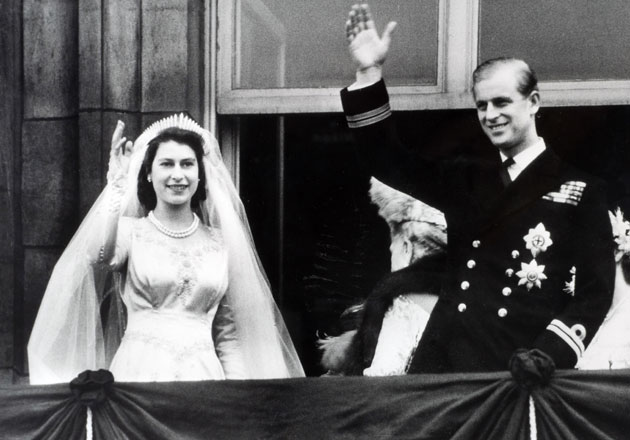
It was the same year he met the 13-year-old princess who was to become his wife. During a visit to the College by King George VI and Queen Elizabeth, the Queen and Earl Mountbatten asked Philip to escort the King’s two daughters, Elizabeth and Margaret, who were Philip’s third cousins through Queen Victoria, and second cousins once removed through King Christian IX of Denmark.
Nobody knows for sure if this was a set-up, but with his pedigree and good looks, Philip must have been recognized as a fine match for the future queen.
The CBC commented, in a broadcast of Prince Philip: The Plot to Make a King, a documentary about the royal marriage: “This film draws on unpublished memoirs to show how Philip and Mountbatten were manoeuvring for a royal marriage as early as the winter of 1939-40, when the Queen was just 13.”
The ploy, if there was one, worked.
Thirteen-year-old Elizabeth fell in love with the handsome prince and began exchanging letters with him. In 1947, the king responded to Philip’s request for his daughter’s hand in marriage by asking only that they wait for a formal engagement until Elizabeth turned 21 on April 18.
In March of that year, Philip prepared for his life’s role as the consort of the Queen. He abandoned his Greek and Danish royal titles, adopted the surname Mountbatten from his mother’s family and became a British subject.
The engagement was announced on July 10, 1947, and a marriage date was set for Nov. 20. The day before the wedding, King George VI bestowed the style His Royal Highness on Philip and, on the morning of the wedding, he was made the Duke of Edinburgh. He declined the official title of Prince Consort, which was also offered. But in recognition of his new role, he did give up smoking.
Philip and Elizabeth were married in a ceremony at Westminster Abbey, recorded and broadcast by BBC radio to 200 million people around the world.
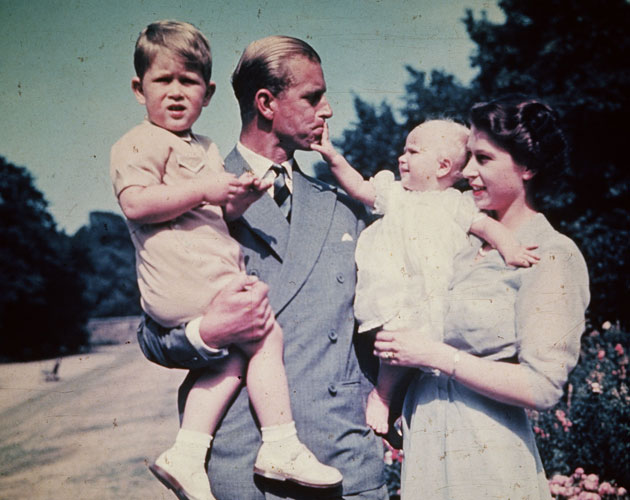
The newly wed Duke and Duchess made Clarence House their home. Prince Charles was born in 1948 and Princess Anne two years later.
What’s in a Name?
In many ways, they were a typical young aristocratic family, titled and entitled — with one exception that would loom large throughout Philip’s life: he would be the subject of his wife, owing her obeisance and fealty.
The formality of Philip’s role was defined less than five years after the wedding when his father-in-law, King George VI, died of lung cancer on Feb. 6, 1952, during the couple’s state visit to Kenya. Philip was 30 and Elizabeth was 25 when she inherited the throne.
In an era of traditional marriages and wifely duties, it was now Philip’s duty to serve his wife, his sovereign. The reversal of traditional roles rankled the prince. He requested that the Royal Family take his surname and be known as the House of Mountbatten.
It was, of course, standard at the time for a wife to adopt her husband’s name. But on the advice of her Prime Minister Winston Churchill and her grandmother Queen Mary, Elizabeth decided to retain her father’s name, Windsor. Philip went public with his displeasure.
“I am nothing but a bloody amoeba,” he complained. “I am the only man in the country not allowed to give his name to his own children.”
Royal biographer Sally Bedell Smith has said that the Queen was reduced to tears by Philip’s “brutal” reaction. Her 2012 book, Elizabeth the Queen suggests that the name row and, presumably, Philip’s sense of emasculation, was to blame for the 10-year gap between the births of Princess Anne and Prince Edward.
In 1960, while pregnant with her third child, the Duke of York, the Queen is said to have visited Prime Minister Harold Macmillan to “revisit the issue of her family name, which had been irritating her husband since 1952.”
MacMillan wrote in his diary, “The Queen only wishes (properly enough) to do something to please her husband — with whom she is desperately in love. What upsets me … is the Prince’s almost brutal attitude to the Queen over all this.”
That year, the Queen declared that while the Royal Family would continue to be known as the House of Windsor, descendants without the style of HRH and the title of Prince or Princess would bear the surname Mountbatten-Windsor.
The announcement came after the death of Queen Mary and the resignation of Winston Churchill. On June 2, 1953, after a year of mourning for the late king, Philip watched the coronation of his wife in Westminster Abbey as she officially became monarch of the United Kingdom, Canada, Australia, New Zealand, South Africa, Pakistan and Ceylon and swore to uphold the law of the land and govern the Church of England.
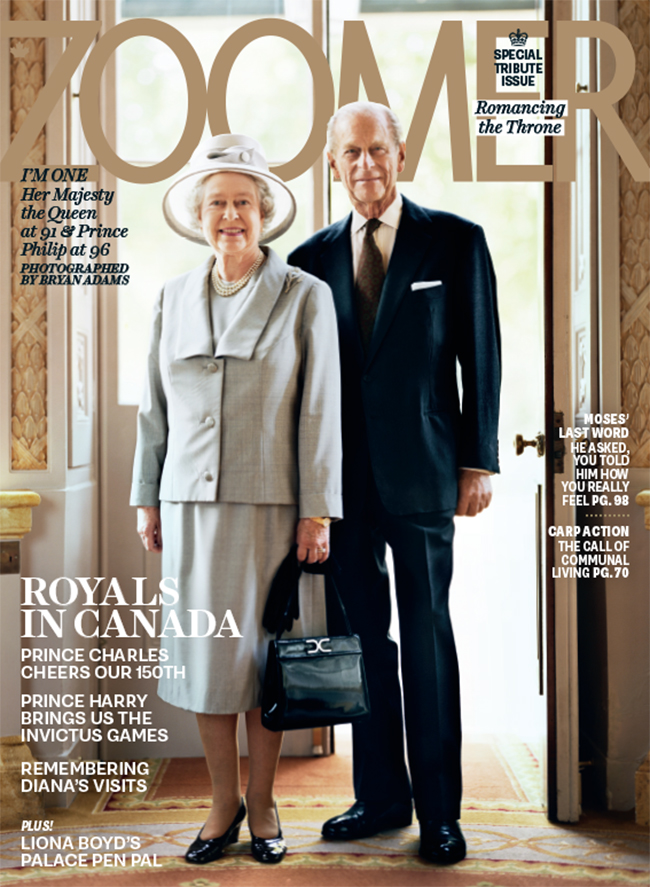
As part of the ceremony, Philip, along with other royal peers, including Prince Henry, Duke of Gloucester, and Prince Edward, Duke of Kent, approached the throne to pledge allegiance.
It was the first British coronation to be televised, and Philip, as chairman of the Coronation Commission, was key in the decision to televise the three-hour ceremony. Thus began Philip’s 70-year career as an indefatigable public servant and his role as what the Queen touchingly described as her “strength and stay,” the title of an Anglican hymn.
A Life of Service
At the time he announced his retirement from public service in April 2017, he was patron of more than 785 charities or organizations, including the Royal Canadian Regiment Association and Canadian Power Squadrons.
As an honorary Marshal of the Royal Air Force, Prince Philip logged more than 5,900 hours in 59 different types of aircraft.
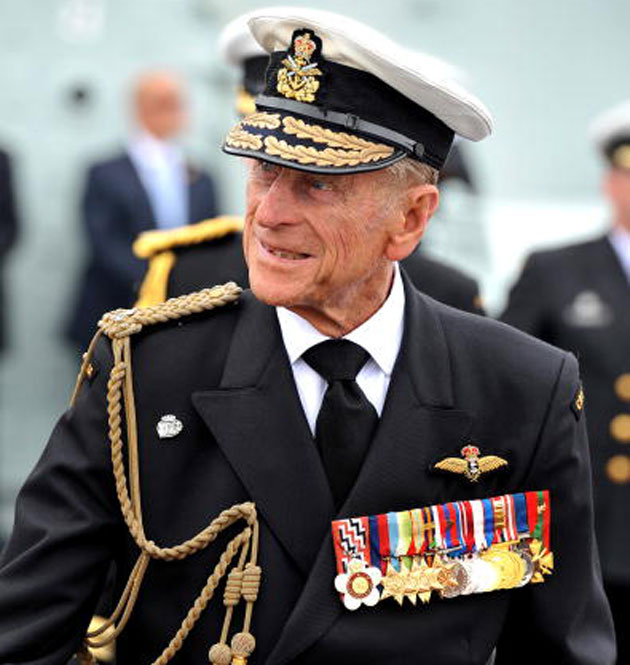
He was an avid oil painter and prolific author, credited with 14 titles on topics including birdwatching, competitive carriage driving and the indigenous people of Brazil. He had made more than 22,191 solo engagements, 637 solo overseas visits and delivered 5,493 speeches.
It was his spontaneous remarks, however, that garnered the most attention. He was famous for sometimes speaking his mind without regard for propriety and for his gaffes, which were reported with glee. “I declare this thing open, whatever it is,” he said on a visit to Canada in 1969, when he opened an addition to Vancouver City Hall.
Philip’s most notable legacy is the Duke of Edinburgh’s Award program for 14 to 24 year olds, encouraging and celebrating self-development, achievement and community service. The non-competitive program is active in more than 140 countries, including Canada where more than 50,000 youth are enrolled.
Raising Heirs
However, Philip’s greatest legacy is undoubtedly his children, grandchildren and great-grandchildren — as it is for most men. In Philip’s case, however, among his progeny are the next three kings of England, followed by the next 20 in line for the throne. Siring heirs to the throne was also an act of public service for the Queen’s consort, perhaps his most important duty, and Philip ably fulfilled that duty, providing the realm with four young royals.
As a father, however, he left much to be desired — at least when it came to Charles. In the 2017 biography Charles: The Passions and Paradoxes of an Improbable Life by Sally Bedell Smith, the author quotes from a previous authorized biography by Jonathan Dimbleby, based on interviews with Charles:
“As a little boy, Charles was ‘easily cowed by the forceful personality of his father,’ whose rebukes for ‘a deficiency in behaviour or attitude…easily drew tears.’ Friends who spoke with Charles’ permission described the duke ‘belittling’ and even ‘bullying’ his son in a ‘rough way.'”
According to Bedell Smith, Philip’s defenders maintained that the duke was worried about Charles being too sensitive. “He worried that Charles could become weak and vulnerable, so he set about toughening him up …”
Asked in an interview when he was 20 years old whether his father has been “a tough disciplinarian” and whether he had been told “to sit down and shut up,” Charles answered without hesitation, “The whole time, yes.”
When Charles was courting Diana but dithering about proposing, Philip warned him to get on with it because Diana’s reputation was on the line.
“Charles chose to interpret the letter as coercive and accusatory,” writes Bedell Smith. She quotes Philip’s cousin, Pamela Hicks, who defended him, saying the letter was “measured and sensitive. Charles read it as ‘You’ve got to get engaged.’ He wasn’t in love, he wasn’t ready. He saw it as a ghastly threat. Psychologically, he assumed his father bullied him, so he read it as a bullying letter.”
Adds Bedell Smith, “Perhaps Charles could have understood the nuances of his father’s message more clearly if he and Philip had talked it through. But written communications were the regrettable norm for father and son.”
Philip’s perhaps ill-advised penchant for embedding advice in letters showed up again in a series of letters to Diana, sent after Andrew Morton’s biography, Diana: Her True Story was published in 1992. In interviews for the book, she went into detail about her misery, depression, bulimia and suicide attempts.
When Charles and Diana were summoned by the Queen and Philip who were shocked by the public confessions, “Diana later claimed that Philip had been ‘angry’ and ‘raging,'” reported Richard Dimbleby.
Philip followed up with a series of letters to Diana, intended to impress upon her the importance of compromise in marriage and the need for duty to family. It was Diana’s lack of discretion that enraged Philip and seemed to him to be a betrayal. He may have been outspoken all his life and prone to gaffes but never ever divulged even a hint about intimate or personal matters.
He was enraged again when Charles spoke about intimate matters to Dimbleby for the authorized biography, The Prince of Wales: An Intimate Portrait, in 1994.
“I’ve never made any comment about any member of the family in 40 years and I’m not going to start now,” the duke told the Telegraph in a rare interview. But he did refer to the Dimbleby book, reported the newspaper, as “that turgid book.”
Prince Philip’s iron fist handling of family matters was again apparent when his once favourite daughter-in-law Sarah “Fergie” Ferguson — Prince Andrew’s ex-wife — made headlines in 1992 with her infamous “toe-sucking” affair with her “financial adviser” while on holiday in southern France. The public scandal led to her exile from the royal family inner circle and Philip held a grudge against her ever since— even after Andrew eventually forgave her.
More recently, however, Philip seemed to have withdrawn from contentious family matters, notably when he opted out of last January’s ‘Sandringham Summit’ negotiations following Prince Harry and Meghan Markle’s shocking announcement that they wanted to step away from their responsibilities as senior royals.
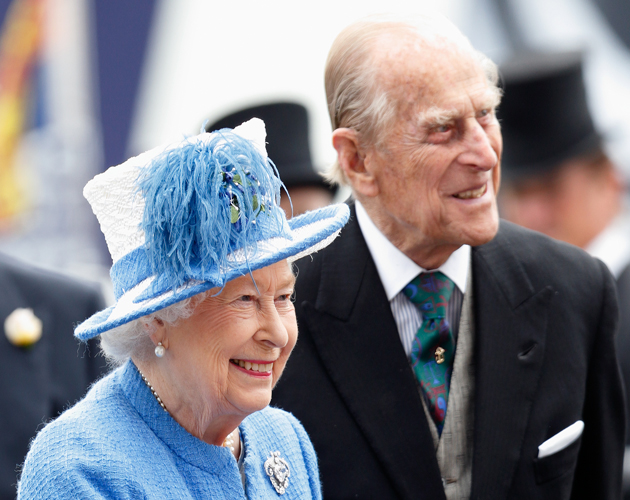
While the sovereign and her consort, unlike their offspring, were unfailingly discreet about their personal lives, that didn’t deter the flagrantly titillating British tabloid press from musing about everything from their eating habits to their sleeping arrangements (reportedly, in separate bedrooms).
Remembering the Iron Duke
Philip, it was noted, used to enjoy a typical English fry-up for breakfast: bacon, sausages, eggs and black pudding. In old age, however, he was said to be more careful about his diet and kept his weight at what it had been most of his life. He was proud of the fact that even after many decades had passed, he could fit into the naval uniform he wore at his wedding.
He remained physically active and athletic, as he had been all his life. He was said to be a good shot, a first-class polo player, accomplished sailor, enthusiastic cricketer and international four-in-hand carriage driver. Although forced to retire from polo at the age of 50 because of a wrist ailment, he continued through his 90s to carriage drive around the grounds of Windsor and Sandringham. He was photographed driving his ponies a few weeks before his 96th birthday.
In 2016, when U.S. President Barack Obama’s arrived at Windsor Castle with First Lady Michelle Obama for a lunch double date with Queen Elizabeth II and Prince Philip, the Secret Service, Marines and body-armoured police on hand watched on as the most closely protected man in the world – who usually gets around in a tank-like, shotgun-armed Presidential Cadillac dubbed, “The Beast” – hopped into the front seat of a Range Rover driven by the 94-year-old Duke of Edinburgh.
However, in January 2018, at the age of 97, Philip crashed into another car while driving his Range Rover on a road near the Sandringham estate in Norfolk. He was shocked but unhurt, but two women in the other car suffered injuries. The Prince voluntarily surrendered his driving licence weeks after the accident.
When he turned 90, the Scotsman newspaper referred to him as the “Iron Duke” and quoted a compliment about his ramrod posture, which he steadfastly and proudly maintained until the end of his life.
As he entered his 10th decade, however, there were a few occasions on which his health began to falter.
In 2011, he underwent an emergency heart operation and had a stent implanted in a blocked artery. The next year, a few days before he turned 91, he was hospitalized with a bladder infection, forcing him to miss part of the Queen’s Diamond Jubilee celebration.
Then in 2014, he was hospitalized for exploratory abdominal surgery. In 2016, he was advised by doctors to forego a trip to the Orkney Islands to commemorate the Battle of Jutland and to remain instead at Balmoral. At the end of that year, both Philip and the Queen were ill with “heavy colds,” and the annual trip to Sandringham for Christmas was cancelled.
But one report suggested that it was not only the deterioration of health in old age that motivated Philip to retire from his public duties but also the encroaching shadow of mortality. “The prince was hit hard by the death of Sir Brian McGrath, his close friend and former private secretary,” revealed an anonymous royal butler, speaking to an English tabloid. “The loss of Sir Brian and another close friend, plus his health over the winter, made up the prince’s mind [to retire],” the butler said. “He thought: ‘I’m 95, I need to slow down.'”
When he was cheekily given an award as Consort of the Year in recognition of his faithful service by Britain’s The Oldie magazine, he responded in kind with a handwritten note: “There is nothing like it for morale to be reminded that the years are passing — ever more quickly — and that bits are beginning to drop off the ancient frame.” He ended by adding, “But it’s nice to be remembered at all.”
He will be remembered as the last man standing, straight and tall in support of his wife and sovereign, in an era in which deserving men could be described as dashing.
And in the words of his wife and sovereign, Queen Elizabeth II on the couple’s 50th wedding anniversary, “We owe him a debt greater than he would ever claim or we shall ever know.”
RELATED:
Jonathan Pryce Confirmed to Play Prince Philip In Seasons 5 and 6 of “The Crown”
Long May She Reign: Celebrating the Calming Influence of The Queen
Still Reigning Supreme: The Queen Wins Royal Popularity Contest for Second Year in a Row
